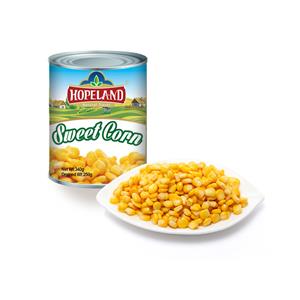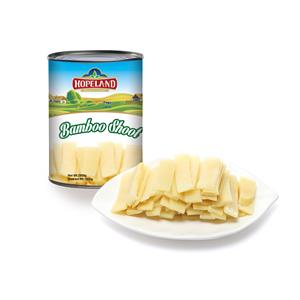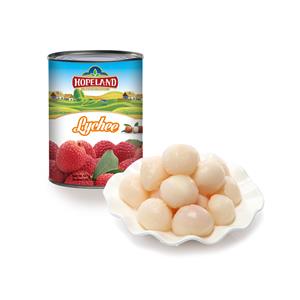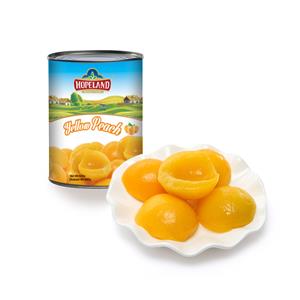Canned Guava Halves in Syrup: A Tropical Delight Preserved in Sweetness
Guava, with its heady fragrance and tropical sweetness, has long been celebrated as one of the world’s most versatile fruits. Native to Central America but now cultivated across Asia, Africa, and the Pacific islands, guava is cherished for its distinctive aroma, delicate texture, and rich nutritional profile. While fresh guavas are seasonal and highly perishable, the food industry has found a way to preserve this tropical gem for year-round enjoyment: canned guava halves in syrup.
This delightful product captures the essence of fresh guava while offering the convenience of extended shelf life, consistent quality, and versatile usage. Whether enjoyed straight from the can, paired with desserts, or incorporated into beverages and savory dishes, canned guava halves in syrup are an indulgence that brings the tropics to your table anytime.
In this comprehensive article, we will explore every aspect of canned guava halves in syrup: from the history of guava cultivation to the processing and packaging methods, nutritional value, global market demand, culinary applications, and creative recipes that showcase this fruit’s potential.
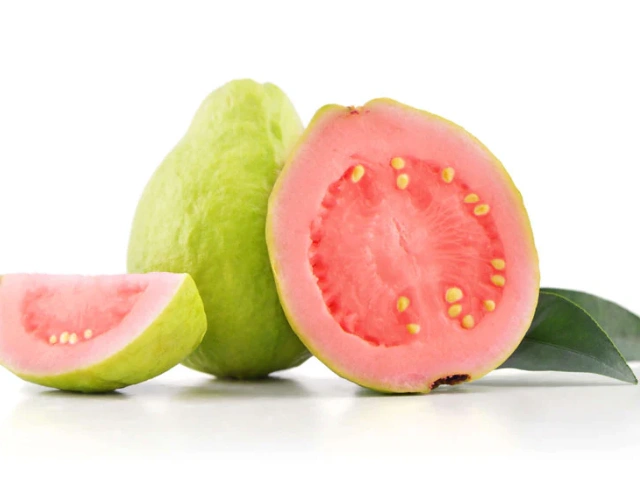
1. The Origins and Global Spread of Guava
Guava (Psidium guajava) originated in Central and South America, particularly in areas like Mexico and Peru, where it has been cultivated for thousands of years. Indigenous peoples revered the fruit not only for its taste but also for its medicinal properties, using guava leaves and bark in traditional remedies.
With the expansion of trade routes during the 16th century, Spanish and Portuguese explorers introduced guava to Asia, Africa, and the Caribbean. Today, guava thrives in tropical and subtropical climates around the world. India, Thailand, the Philippines, and Brazil are among the largest producers.
This global spread ensured that guava became a staple fruit in many cuisines. In Latin America, it appears in pastries and candies; in Asia, it is eaten with chili salt or preserved as jam; and in the Pacific, guava juice is a refreshing staple. Yet fresh guavas remain highly perishable, which prompted the rise of canning as a way to share this fruit with the world.
2. Why Canned Guava Halves in Syrup?
Canning has long been a trusted method of food preservation. By sealing fruit in airtight containers and heating them to destroy microorganisms, canning extends shelf life without the need for artificial preservatives.
When guava is canned in syrup, several advantages emerge:
Seasonal availability: Consumers can enjoy guava all year, regardless of harvest times.
Consistent quality: Uniform size, ripeness, and sweetness are ensured during production.
Convenience: Ready-to-eat fruit halves eliminate the need for peeling, coring, or slicing.
Enhanced flavor: The syrup enhances guava’s natural sweetness and preserves its aroma.
Culinary flexibility: The product works well in both sweet and savory recipes.
For international markets where fresh guava is rare, canned guava halves in syrup provide an authentic tropical experience, making them particularly popular in Europe, North America, and the Middle East.
3. Processing and Production of Canned Guava Halves
The production of canned guava halves in syrup follows a meticulous process designed to preserve taste, texture, and safety. The steps generally include:
3.1 Fruit Selection
Only mature but firm guavas are chosen. Overripe fruit may become mushy during processing, while underripe guavas may lack sweetness. Quality control ensures consistent size and color.
3.2 Washing and Peeling
Freshly harvested guavas are thoroughly washed to remove dirt and residues. Some producers peel the guavas to give a smoother texture, while others leave the skin intact for added fiber and authentic flavor.
3.3 Cutting and Coring
The guavas are cut into halves. Seeds may or may not be removed, depending on the brand and consumer preference. Seedless varieties are often favored in premium markets.
3.4 Syrup Preparation
A sugar solution is prepared, sometimes infused with citric acid or ascorbic acid to maintain flavor and color. Syrup concentration varies—light syrup is less sweet, while heavy syrup delivers a dessert-like indulgence.
3.5 Filling and Sealing
Guava halves are placed in sterilized cans or glass jars and filled with hot syrup. Air is removed to prevent spoilage, and the containers are hermetically sealed.
3.6 Sterilization and Cooling
The sealed cans are heat-processed to eliminate bacteria, yeast, and mold. This step ensures food safety and extends shelf life, often up to two years. Afterward, the cans are cooled and labeled.
4. Nutritional Value of Canned Guava Halves
Guava is renowned for its high vitamin C content—often exceeding that of oranges. While canning slightly reduces vitamin levels, canned guava halves still retain significant nutritional benefits.
Key Nutrients:
Vitamin C: Strengthens immunity and promotes collagen synthesis.
Dietary Fiber: Supports digestion and satiety.
Potassium: Helps regulate blood pressure.
Antioxidants (lycopene, carotenoids): Combat free radicals.
Natural Sugars: Provide quick energy.
The syrup increases caloric content, but it also enhances taste. For health-conscious consumers, draining or rinsing the fruit reduces sugar intake without losing too much flavor.
5. Culinary Uses of Canned Guava Halves in Syrup
Canned guava halves are incredibly versatile. Their firm texture and tropical aroma lend themselves to numerous culinary creations:
5.1 Direct Consumption
Enjoy straight from the can, chilled, as a refreshing snack.
Serve in fruit bowls or buffets for a tropical touch.
5.2 Desserts
Cakes & Pastries: Use guava halves as toppings or fillings.
Puddings & Custards: Combine with creamy bases for a sweet contrast.
Ice Cream & Sorbet: Blend with syrup for a tropical flavor boost.
5.3 Beverages
Blend guava halves into smoothies, cocktails, or mocktails.
Use syrup as a natural sweetener for iced teas or sparkling drinks.
5.4 Savory Applications
Pair guava halves with roasted meats, particularly pork or chicken, for a sweet-sour glaze.
Dice into salsas with chili, lime, and onion for a Caribbean-style relish.
5.5 Breakfast Ideas
Mix into yogurt bowls, oatmeal, or granola.
Spread guava syrup over pancakes or waffles.
6. Global Market and Trade
Canned tropical fruits—including guava—are a growing segment in the global food trade. Consumers seeking exotic flavors are driving demand in regions where guava does not grow locally.
Leading Exporters:
Thailand and the Philippines: Major producers in Asia.
India: A top guava grower, expanding into canned exports.
Mexico: Supplies North American markets.
Key Markets:
Europe: Increasing demand for exotic fruit in supermarkets.
North America: Interest in Latin-inspired cuisine boosts sales.
Middle East: Canned guava is valued for its sweetness and long shelf life.
The convenience of canned guava halves makes them popular in hospitality, catering, and retail sectors.
7. Advantages for Food Businesses
For restaurants, bakeries, and hotels, canned guava halves provide several advantages:
Consistency: Standardized size and flavor for reliable menu offerings.
Cost-efficiency: Lower spoilage compared to fresh guavas.
Storage convenience: Easy to stock and transport.
Versatility: Suitable for both traditional and innovative recipes.
Manufacturers can also market them under private labels, offering opportunities for brand differentiation in competitive markets.
8. Creative Recipes with Canned Guava Halves
Here are a few inspiring recipes showcasing canned guava halves in syrup:
8.1 Tropical Guava Cheesecake
Crust: Graham crackers and butter.
Filling: Cream cheese, sugar, eggs, vanilla.
Topping: Canned guava halves sliced thin, arranged decoratively, drizzled with syrup.
8.2 Guava Glazed Roast Chicken
Roast chicken seasoned with garlic, paprika, and pepper.
Glaze: Puree guava halves with syrup, add soy sauce and vinegar.
Brush glaze over chicken during the final 30 minutes of roasting.
8.3 Guava Sunrise Smoothie
Blend guava halves, syrup, orange juice, banana, and ice.
Garnish with mint leaves.
8.4 Caribbean Guava Salsa
Dice guava halves, mix with red onion, chili, lime juice, and cilantro.
Serve with grilled fish or tortilla chips.
8.5 Guava Pancake Topping
Warm guava halves in syrup with a splash of cinnamon.
Spoon over pancakes or waffles with whipped cream.
9. Sustainability and Future Outlook
The canned fruit industry increasingly embraces sustainable practices:
Eco-friendly packaging: Recyclable cans and glass jars.
Energy-efficient processing: Reduced carbon footprint in sterilization.
Fair trade initiatives: Supporting small-scale guava farmers.
With rising consumer interest in tropical flavors, guava’s global presence is set to expand further. Innovations like reduced-sugar syrups, organic certifications, and premium presentations will continue to drive growth.
10. Conclusion
Canned guava halves in syrup embody the perfect blend of tropical indulgence and modern convenience. They preserve the essence of ripe guava—its fragrance, sweetness, and nutritional value—while providing versatility in global kitchens. Whether served simply as dessert, blended into drinks, or paired with savory dishes, canned guava halves offer endless possibilities.
As international markets increasingly crave exotic fruits, canned guava is positioned to shine not only as a pantry staple but also as a symbol of how traditional flavors can be shared across cultures. For businesses, chefs, and home cooks alike, this product is much more than preserved fruit—it is a sweet connection to the tropics, waiting to be enjoyed year-round.

